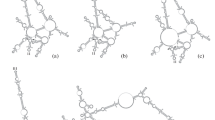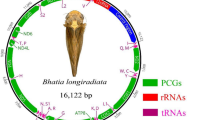Abstract
To evaluate the general utility of sequences of the nuclear rDNA internal transcribed spacer (ITS) regions for phylogenetic analyses of animal species groups and their broader relationships, sequences were obtained for 19 species of the genus Haliotis plus a keyhole limpet and a more distantly related gastropod, the Chilean abalone. Three subclades of Haliotis species appear consistently, each encompassing little variation. They are (A) the North Pacific species, (B) the European species, and (C) the Australia species. The one Caribbean species examined clearly groups with the North Pacific clade, not the European clade. H. midae (South Africa) and H. diversicolor supertexta (Taiwan) both diverge basal to the European and Australian species groups in the phylogenetic trees. Sequence comparisons showed that one species of Haliotis, H. iris from New Zealand, is quite distant from the remaining Haliotis species, almost as much as the more obvious outgroup, the keyhole limpet, an observation common to other DNA sequence analyses of these taxa. Using the rate of nucleotide change calculated from the sister Caribbean-Pacific pair, the length of the H. iris long branch is compatible with the suggestion that its ancestry became isolated on New Zealand at Gondwandan breakup. Use of ITS permits a totally independent estimate of the phylogenetic relationships, yet branching order was very similar to that established using other DNA regions studied previously, including those under strong positive selection. Knowledge of the RNA transcript secondary structure is particularly useful in the optimal alignment of more distantly related taxa. The RNA transcript secondary structure of Haliotis ITS2 shows conservation of features found also in ITS2 of angiosperms and algal taxa. Since ITS, particularly ITS2, is not saturated with nucleotide changes even at the family level, it should be useful for phylogenetic reconstruction of animal groups, not just at the species and genus levels but perhaps also for families and above.
Similar content being viewed by others
Author information
Authors and Affiliations
Additional information
Received: 20 April 2001 / Accepted: 9 July 2001
Rights and permissions
About this article
Cite this article
Coleman, A., Vacquier, V. Exploring the Phylogenetic Utility of ITS Sequences for Animals: A Test Case for Abalone (Haliotis). J Mol Evol 54, 246–257 (2002). https://doi.org/10.1007/s00239-001-0006-0
Published:
Issue Date:
DOI: https://doi.org/10.1007/s00239-001-0006-0




